
Review: DC/Young Animal: Milk Wars
By Jonathan Edwards
DC/Young Animal: Milk Wars is a weird kind of crossover. I know, big surprise from the story about the extradimensional corporation Retonn weaponizing milk to “homogenize” the DCU. But, what I mean is, it’s not a dedicated five-issue miniseries, nor is it a five-part story taking place in single issues of the various books involved. Instead, it’s five separate one-shots, each pairing DC and Young Animal characters. Now, Grant Morrison did something similar with The Multiversity, but there, it directly ties into the narrative. Whereas, with Milk Wars, it’s a stylistic choice more than anything else. But, what makes it truly strange is the fact that two of the one-shots, Mother Panic/Batman Special #1and Shade the Changing Girl/Wonder Woman Special #1 have little to no impact on the plot. You could remove both of those issues and their respective characters, and the story literally wouldn’t change at all.

Review: Justice League of America #29
By Jonathan Edwards
As singer and songwriter Adele once wrote and sang, “this is the end.” In this case, it’s the end of a long, at times bleak, trek of a comic titled Justice League of America. I remember being really excited when first hearing about the book, its interesting cast of characters, and all of the possibilities that came with them. And, the first four Rebirth one-shots, focusing on The Atom, Vixen, The Ray, and Killer Frost, respectively, were all promising prequel tie-ins that each built up more and more hype for the main book. Then, Justice League of America: Rebirth #1 came out, and it was different. Everything suddenly felt less thought-out and put together and more superficial and contrived. However, this wasn’t an isolated incident. Justice League of America issues #1 through #4 followed the trend with a weak and irritating first story arc, and things only went further downhill as the series continued. Slightly over a year later and here we are with Justice League of America #29. And, long story short, the conclusion to “Dawn of Time” sucks, but the series finale afterward is marginally better.

Review: Justice League of America #28
By Jonathan Edwards
After reading and reviewing the absolute hot mess that was Justice League of America #27, I found a question prodding me from the back of my mind: had the introduction of Ahl, God of Superheroes, really been as out of nowhere and slipshod as I’d thought while writing that review? It seemed too poorly thought out for even Orlando, so I did some quick research and discovered that it might’ve very well tied into the recent Milk Wars crossover event between JLA and pretty much every book from DC’s Young Animal imprint. As such, I opted to verify those claims for myself. This led me not just to read the entirety of Milk Wars but also reread the first four issues of Doom Patrol, read issues #6 through #10 for the first time, reread parts of JLA #27 and #22, and, of course, read Justice League of America #28. It could perhaps be considered an excessive amount of reading, as Ahl is only relative to five of those eighteen issues. What’s more, only two of those appearances were in series other than JLA proper, and not even those make his presence here any less problematic.

Review: Justice League of America #27
By Jonathan Edwards
Well, here we are at the beginning of the end for Steve Orlando’s Justice League of America, and holy shit is this issue terrible. I mean, Jesus, this book’s been bad in the past, even awful, but this takes the cake. From the utterly laughable premise to the entirely clumsy execution, everything about Justice League of America #27 reads like Orlando isn’t even trying anymore and is instead phoning it in as much as possible. Maybe this is his way of being petty and getting back at DC for canceling his crappy book, or maybe he somehow thinks this is a quality idea. But, it really, really isn’t, and it kind of has to be seen (or at least heard) to be believed.
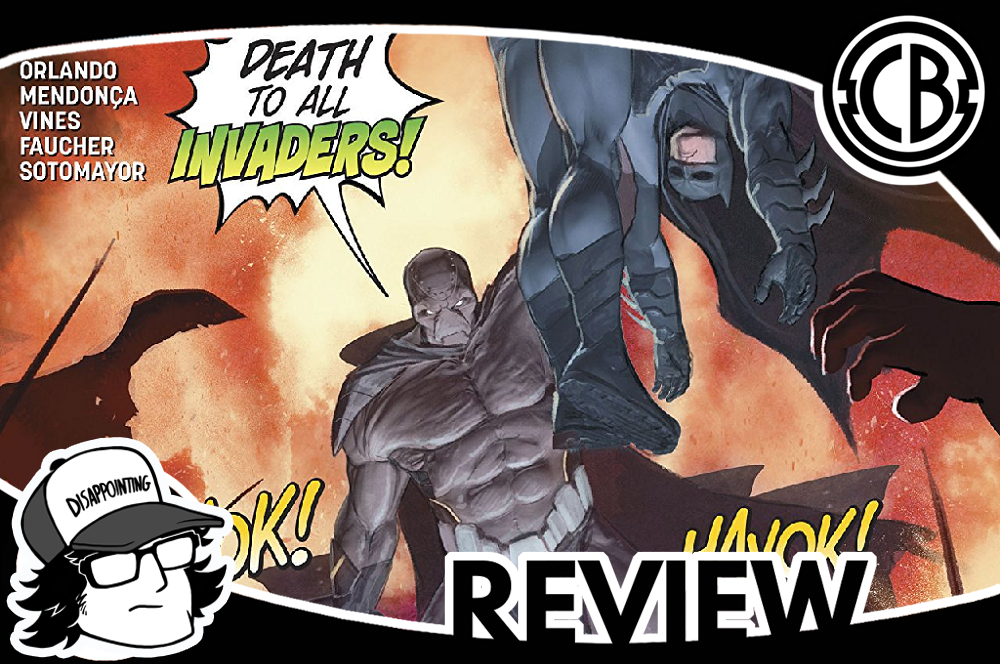
Review: Justice League of America #26
By Jonathan Edwards
As it turns out, “New Life and Death” isn’t just the same type of story “Deadly Fable” was. No, as Orlando shows us with Justice League of America #26, “New Life and Death” is also a retread of “Panic in the Microverse.” Except, this time, it ends exactly how I said “Panic in the Multiverse” should have ended in my review of Justice League of America #17, with the villain willingly sacrificing themselves to save their home. The problem is, in the context of “New Life or Death,” that ending makes no sense. Especially since here it doesn’t matter who sacrifices themselves. But, I’m getting a bit ahead of myself.

Review: Justice League of America #25
By Jonathan Edwards
Simply put, Justice League of America #25 is a boring issue. And, I don’t mean just low-key. Low-key is to be expected from the issue following a story arc’s conclusion. Some writers monopolize on that phenomenon by writing the issue as an epilogue or character-focused one-shot. Orlando has attempted that at times throughout his JLA run, and it would’ve worked if those issues had been better. However, after finishing the arc he’d spent almost twenty issues building up to, he’s opted to start right in on the next one. Granted, that is perhaps more a symptom of him learning his run will soon end than his discretion as a writer. Regardless, the problem isn’t actually that he rolls right into another big (well, as “big” as two issues can be) arc. In fact, at first, it seems like this might actually be a great jumping on point if, for some reason, you wanted to jump on the book right at the end of its lifespan. But, what makes “New Life and Death” ultimately not work is the fact that it’s basically a less interesting, less relevant, and somehow clumsier, retread of “Deadly Fable” that also tries way too hard to tie into the events of Dark Nights: Metal.

Review: Doom Patrol/Justice League of America #1
By Kelly Gaines
As suddenly as it began, DC’s Milk Wars has ended. For a relatively short event, Milk Wars is loaded with references, ideologies, and narratives that need intense dissection to piece together completely. I wouldn’t say that I’m disappointed, just a little frustrated with the amount of work the average reader will have to do to follow and understand what they’re reading. If you have a sturdy background in Grant Morrison’s Multiversity, the complete history of the Doom Patrol, the Justice League, and all of the Young Animal titles, you have nothing to worry about here. If you haven’t read much of the Young Animals, aren’t up to date with Doom Patrol, and haven’t delved into the history of DC’s multiverse, you’re going to need a lot of breadcrumbs to find your way through this story. Milk Wars is clever, hilarious, and fully embraces the “meta-narrative” trend that’s been taking over more and more in pop culture. However, Young Animals was created as a way to bring new readers into the DC universe without having to feel lost or behind. Milk Wars effectively alienates any new readers of not only DC but comics as a whole. I’ve been a DC girl since about eight years old, and even I had to put reading on hold to look up back issues and google characters to piece everything together. Milk Wars is a smart read for an avid comic fan, but likely a let down to readers hoping to use the Young Animal titles as gateway comics.

Review: Justice League of America #24
By Jonathan Edwards
With Justice League of America #22, Steve Orlando rose to the occasion and finally wrote what I would call the first truly decent issue of his run on the series proper (meaning not including the prequel one-shots). Sure, issue #17 ended with some legitimate character development for Ryan, but that was in spite of the first half, as well as every other issue in that story arc, being crappy. And yes, if you ignore the art problems, the Annual was a relatively fine read. But, with double the page count and only about a third of the main cast (read: Lobo and Black Canary), it failed to represent or even adequately connect to the rest of the series, and it sure as hell didn’t give the impression that the book, as a whole, would be getting any better. However, that changed with JLA #22. We finally got a villain with some complexity to her, and none of the title team’s members did anything too stupid. And then, Justice League of America #23 managed to keep it mostly together. But, as I said in my review for that issue, it takes three to form a pattern. So, here we are with Justice League of America #24, the upshot of which is twofold. On the one hand, it appears that Orlando has indeed settled into a new, less stupid standard for his last half-dozen issues of JLA. But, at the same time, there’s been a conceptual short-sightedness that’s been at the heart of his work on this title, and it returns as clear cut as ever here.

Review: Justice League of America/Doom Patrol #1
By Kelly Gaines
Justice League/ Doom Patrol #1 is the first chapter of the Milk Wars event; an event promised to be the “weirdest” thing that has ever happened to the DC universe. If you were a fan of My Chemical Romance in the early 2000’s, you now have something else to thank Gerard Way for. I’ve read interviews with Way over and over trying to piece together how it is that a rockstar walked into the DC office and said “hey, can I do whatever I want?” and was pretty much told “sure, go nuts.” I’ve decided I don’t care how it happened, I’m just extremely grateful that it did. This is something Way has said he’s wanted to do his whole life- becoming a rockstar was getting sidetracked. I don’t know what god you have to pray to for ‘rockstar’ to be the job you fall into while you’re working towards your dreams, but take me to that church.
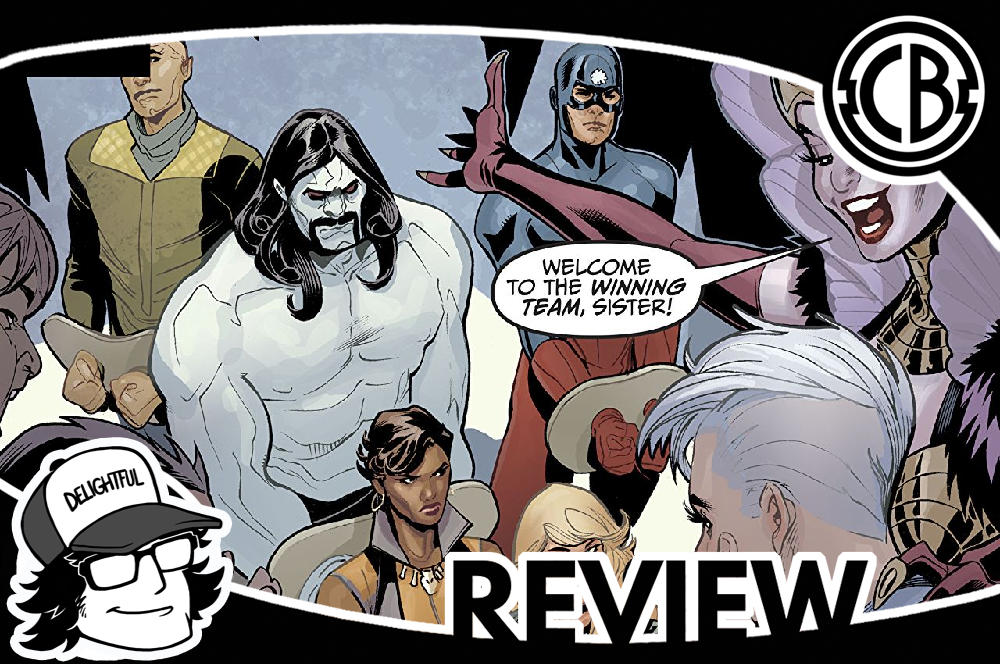
Review: Justice League of America #23
By Jonathan Edwards
It seems I was wrong about “Deadly Fable” being only two issues long. Well, sort of. Because while DC claims the next issue is part one of “New Life and Death” (which is supposedly “following the Queen of Fables saga”), this one ends on a cliffhanger without any kind of conclusion in sight. Now, could I simply be taking DC’s description of next issue a little too much at face value? Sure. In fact, I hope that’s the case. But, it’s hard to be certain with a book that has previously failed to end arcs satisfactorily and at one point abruptly injected two flashbacks into the middle of a story before resolving its own cliffhanger. Of course, the biggest question regarding Justice League of America #23 is whether or not it keeps up the actually decent quality the previous issue finally managed to achieve. And, the answer is, again, sort of.

Review: Justice League of America #22
By Jonathan Edwards
Huh. In a lot of ways, Justice League of America #22 is a pretty decent, even good, issue. And, that’s legitimately surprising. Steve Orlando’s entire JLA run has been building up to this story, but so much of it has been mediocre (or just plain bad) that it was hard to expect much good to come from “Deadly Fable.” Any yet, so far, it’s avoided a number of previously seen pitfalls. In place of the usually paper-thin and blatantly wrong antagonists, we get one with relatively sounds motivations and rationales behind her actions and statements. At least for a villain. Instead of ungrateful civilians who’re willing to turn against the JLA at the drop of a hat, we get citizens that’re concerned and horrified by their defeat. And, even the majority of the heroes react and respond appropriately to their given circumstances. Killer Frost is perhaps the major exception, but at the same time, her irrationality isn’t wholly without justification either. It’s not flawless, but it is a substantial step in the right direction.
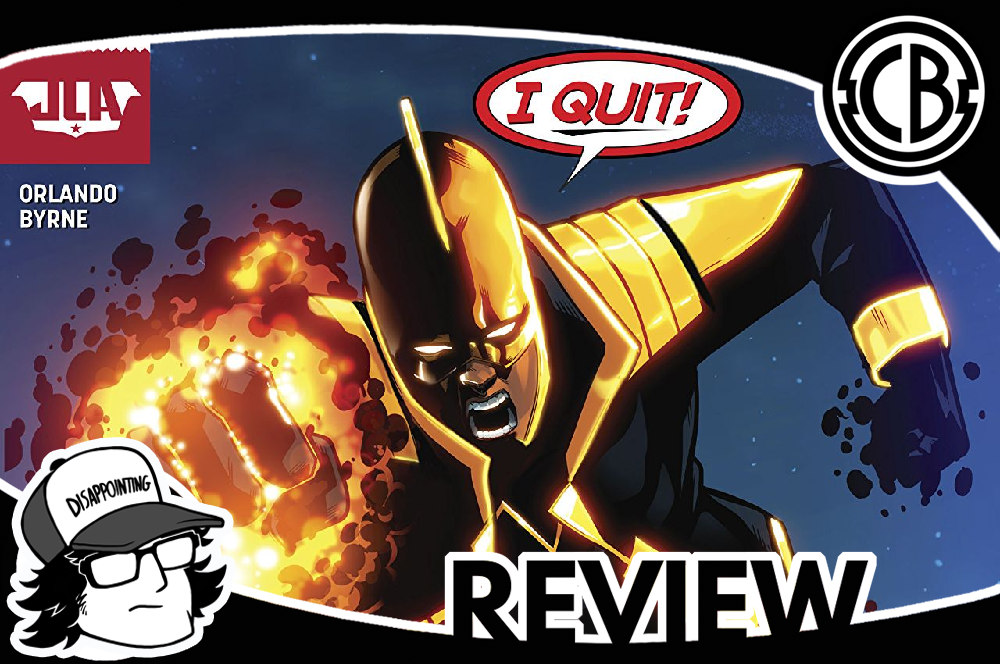
Review: Justice League of America #21
By Jonathan Edwards
Justice League of America #21 is a one-shot focusing on the book’s most likable character: Ray “totally not an insufferably whiny and pretentious man-child” Terrill. Yippee skippy. Of course, just like every other time JLA has put the spotlight on Ray, the goal is to illustrate just how good and fair and doggone heroic he is. And believe it or not, this is the most successful attempt made to date. Yet, it’s not because Ray suddenly and inexplicably turning into a decent character. Rather, it’s because he finally runs into someone that preaches and screams at him at least as much as he does to everyone else.

Worst Comic Books of 2017 - #1
Welcome to the Comic Bastards end of the year list. Similar to our group reviews, each of the participating writers will be giving their picks for their best and also worst comics of 2017. Without further ado, here are our #1 picks for Worst of 2017.
Click here to read #2 on the list!
Click here to read #3 on the list!

Review: Justice League of America #20
By Jonathan Edwards
Based on the first half of this issue, I was going to rate it a two out of five. Heck, I was even going to say that this wasn’t the worst way for “Precision Strike” to end. And then, I got to the second half. Suddenly, Justice League of America #20 changed from the flawed ending of a weak story arc to a nigh incoherent attempt to justify and explain away its bullshit premise. “All Prometheus needed to divide us was a video camera and a list of questions.” Yes, Ryan, but only because everyone he “interviewed” was written without the ability to detect his entirely obvious attempts to manipulate them. And, maybe it could’ve worked, at least a little bit if any of the previous issues put character development first instead of dedicating so much fucking time on superficial plots with one-note villains.

Review: Justice League of America Annual #1
By Jonathan Edwards
As of the writing of this review, I have read and reviewed every single issue of DC’s post-Rebirth Justice League of America. This includes the five one-shots released the first issue of the main series, which I liked. Justice League of America #1 and #2 were disappointing after that, but it wasn’t until about the third issue that I started being entirely outspoken about why the book and why it continues to suck. And in my review for JLA #12, I explained that having such consistently heavy criticism for it is why I don’t drop it.
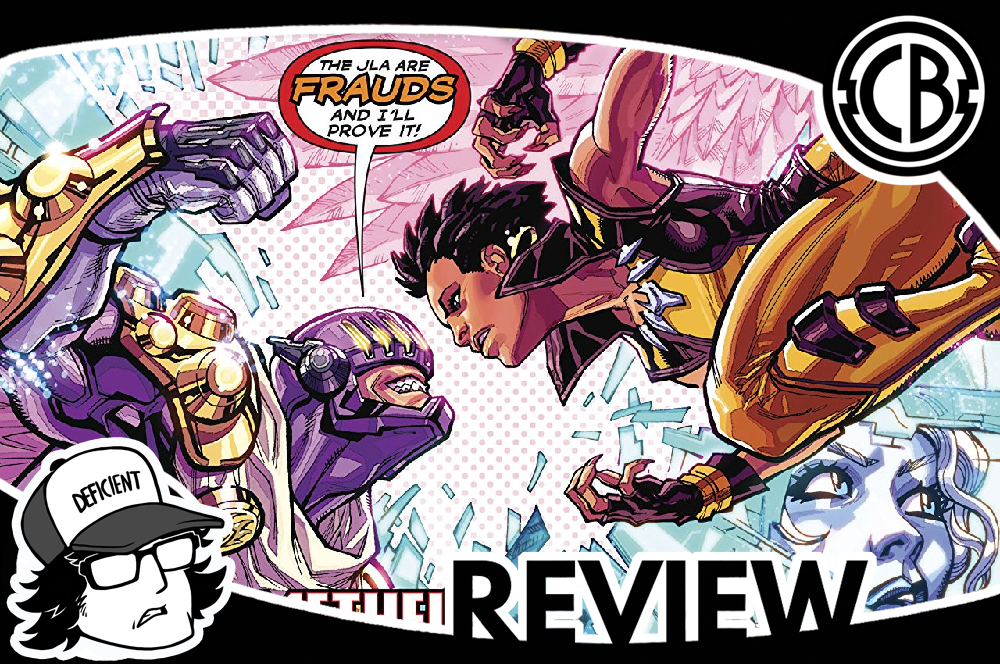
Review: Justice League of America #19
By Jonathan Edwards
It’s ironic that a book as clumsy and heavy-handed as Justice League of America would title one of its story arcs “Precision Strike.” What’s more, I think Orlando himself might be realizing that and panicking. Because, in addition to more of Prometheus’s cliché “I planned for every possible scenario” speeches, we get two back to back panels where first the Atom and then Black Canary comment about the “precision” of the latter using her supersonic scream to overload the former’s bio-belt, defaulting it.
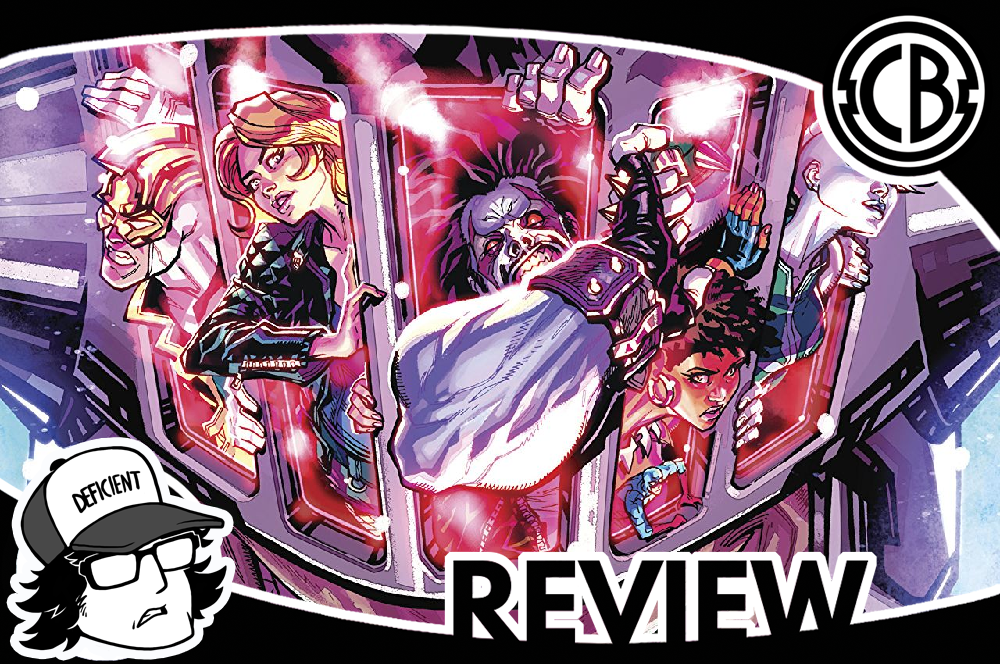
Review: Justice League of America #18
By Jonathan Edwards
Ugh. I realize that it was naïve for me to think that maybe, just maybe, since the last issue ended up being somewhat decent, this one would follow suit. Nope. Admittedly, the premise here isn’t an inherently awful one, but it’s one that requires some nuance and careful execution to work. And, therein lies the problem. Neither of those traits are among those that Orlando’s run on JLA exhibits, let alone excels at. What’s more, you can actually see the internal logic try to be established, start falling apart and eventually completely break down throughout the first few pages. So, by the time the “conflict” really starts, you’re already ahead of it and bored waiting for the story to catch up.

Review: Justice League of America #17
By Jonathan Edwards
“Panic in the Microverse” is finally over and thank god. I addition to the regular problems with this book, this particular arc has really dragged. And, it’s no mystery why. Injecting two full issue-length flashbacks right in the middle of your story, and before the cliffhanger you previously ended on, does no favors for pacing. That’s especially true when neither of said flashbacks provide any useful or necessary information and plot progression. But, that’s the past. How is Justice League of America #17 here in the present? Well, to be honest, it’s not bad. There are still a few hiccups along the way, but the core premise of how to stop the Microverse from being destroyed is sound, and we actually get a good chunk of time dedicated to developing Ryan’s character. Not counting any of the JLA Rebirth one-shots, this might be the best issue of this series to date.

Review: Justice League of America #17
By Jonathan Edwards
“Panic in the Microverse” is finally over and thank god. I addition to the regular problems with this book, this particular arc has dragged. And, it’s no mystery why. Injecting two full issue-length flashbacks right in the middle of your story, and before the cliffhanger you previously ended on, does no favors for pacing. That’s especially true when neither of said flashbacks provide any useful or necessary information and plot progression. But, that’s the past. How is Justice League of America #17 here in the present? Well, to be honest, it’s not bad. There are still a few hiccups along the way, but the core premise of how to stop the Microverse from being destroyed is sound, and we actually get a good chunk of time dedicated to developing Ryan’s character. Not counting any of the JLA Rebirth one-shots, this might be the best issue of this series to date.
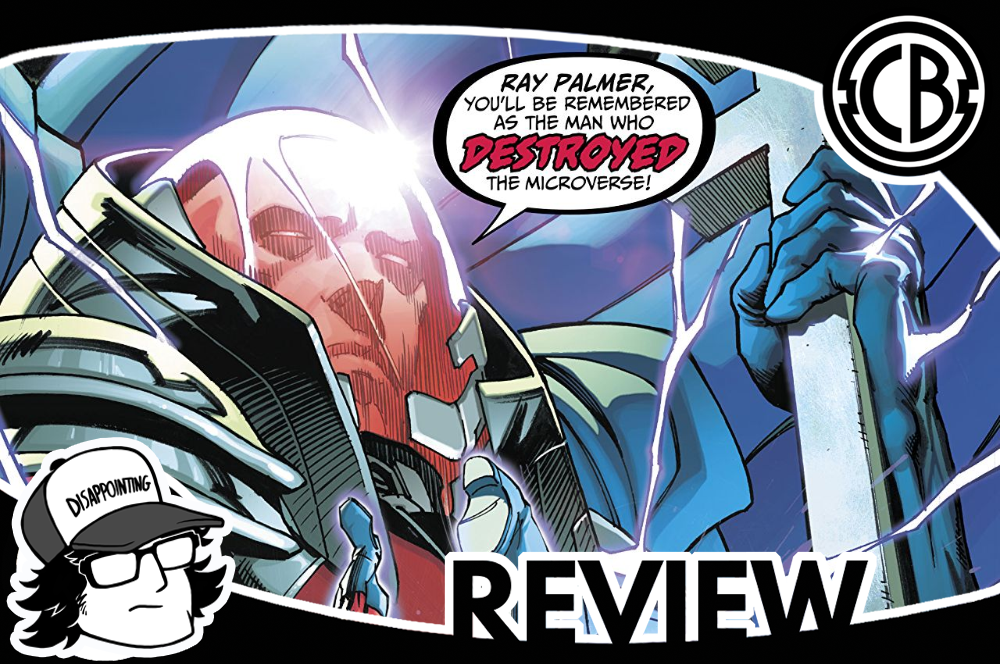
Review: Justice League of America #16
By Jonathan Edwards
Wow, another whole issue completely dedicated to a flashback for this fucking story arc. At least this time we get some resolution for the how and why of Aron Aut’s betrayal. However, I’d like to reiterate that that’s a cliffhanger we were left with two issues ago, and there’s no good reason both flashbacks couldn’t be contained in a single dedicated issue. The lion’s share of Palmer’s was made up of redundancies, and Aut’s goes to bizarrely extreme length to ensure his characterization is nothing more than a one-dimensional, unrepentant supervillain, even going as far as giving him a whole different costume and the moniker “The Null.” If all of that fat was stripped away, they probably could’ve had a pretty strong and streamlined backstory issue that, dare I say, could’ve even gotten us excited to see the conclusion of “Panic in the Microverse” (side note: while the covers to every issue in this arc have consistently called it “Panic in the Microverse,” I’m fairly certain the internal credits of the first two or three issue referred to it as the “Crisis in the Microverse” instead).
FEATURED POSTS
Archive
- July 2025 5
- April 2025 2
- March 2025 2
- February 2025 3
- January 2025 6
- December 2024 2
- November 2024 1
- October 2024 1
- July 2024 4
- June 2024 3
- May 2024 2
- April 2024 7
- March 2024 7
- January 2024 3
- December 2023 2
- November 2023 4
- October 2023 6
- September 2023 5
- August 2023 12
- July 2023 4
- June 2023 3
- May 2023 2
- April 2023 3
- March 2023 2
- February 2023 1
- January 2023 3
- December 2022 2
- November 2022 3
- October 2022 3
- September 2022 2
- August 2022 1
- July 2022 6
- June 2022 4
- May 2022 14
- April 2022 15
- March 2022 9
- February 2022 5
- August 2019 1
- January 2019 2
- August 2018 12
- July 2018 188
- June 2018 159
- May 2018 204
- April 2018 156
- March 2018 178
- February 2018 180
- January 2018 176
- December 2017 112
- November 2017 143
- October 2017 152
- September 2017 210
- August 2017 180
- July 2017 199
- June 2017 150
- May 2017 129
- April 2017 184
- March 2017 180
- February 2017 178
- January 2017 195
- December 2016 164
- November 2016 135
- October 2016 163
- September 2016 219
- August 2016 248
- July 2016 267
- June 2016 242
- May 2016 160
- April 2016 199
- March 2016 163
- February 2016 145
- January 2016 175
- December 2015 105
- November 2015 166
- October 2015 130
- September 2015 147
- August 2015 135
- July 2015 183
- June 2015 190
- May 2015 140
- April 2015 275
- March 2015 198
- February 2015 430
- January 2015 198
- December 2014 144
- November 2014 187
- October 2014 239
- September 2014 193
- August 2014 289
- July 2014 334
- June 2014 308
- May 2014 244
- April 2014 253
- March 2014 268
- February 2014 232
- January 2014 254
- December 2013 302
- November 2013 276
- October 2013 349
- September 2013 262
- August 2013 325
- July 2013 349
- June 2013 303
- May 2013 373
- April 2013 416
- March 2013 124
- February 2013 16
- January 2013 26
- December 2012 24
- November 2012 17
- October 2012 18
- September 2012 22
- August 2012 13
- July 2012 20
- June 2012 12
- May 2012 23
- April 2012 20
- March 2012 9
- February 2012 20
- January 2012 96
- December 2011 93
- November 2011 73
- October 2011 52
- September 2011 54
- August 2011 37
- July 2011 1





